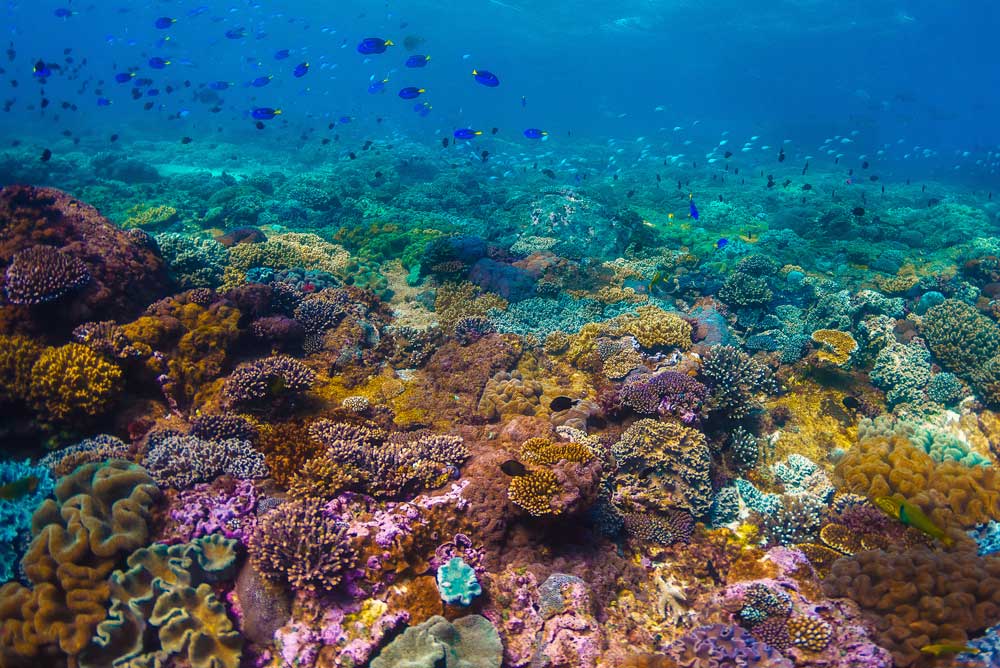
Great Barrier Reef Liveaboard Diving in Australia
When you choose to explore the Great Barrier Reef through a liveaboard, you elevate your diving experience to a whole new level. Liveaboards in Great Barrier Reef offer you the luxury and convenience of having everything you need at your fingertips, literally living on the water as you explore one incredible dive site after another.
Immerse yourself in the breathtaking world beneath the waves and discover what makes the Great Barrier Reef a destination like no other. Happy diving!
About Great Barrier Reef Liveaboard Diving
The Great Barrier Reef has been around for roughly 500,000 years, but its current structure is estimated to be 6,000 to 8,000 years old.
The Indigenous peoples of Australia have lived alongside the reef for thousands of years, incorporating its riches into their cultural stories and livelihoods. It's not just a dive site but a living testament to the complex and long-standing relationship between nature and humans.
Great Barrier Reef dives sites are extensive and without a shadow of a doubt too many to even consider talking about. However, there are a special number of these dive sites that are worth mentioning and frequently visited by all the Great Barrier Reef liveaboards.
Let's talk about some of the must-visit dive sites, starting with Osprey Reef. Located far from the coast, Osprey Reef is a submerged atoll that offers wall dives plunging to enormous depths. It's a unique experience filled with spectacular marine life, including grey reef sharks and hammerheads. None many such options for a Great Barrier Reef liveaboard.
Then there are the Ribbon Reefs, a series of ten individual reefs that provide an array of experiences from drift dives to swim-throughs. Here you might encounter dwarf minke whales in the winter months and marvel at the colorful coral gardens.
Milln Reef and Flynn Reef are closer to the Cairns marina, approximately 60 kilometers away, making them accessible yet equally captivating. Milln Reef offers swim-throughs and caverns, providing a playground for beginner and advanced divers alike. Flynn Reef is known for its vibrant coral gardens and schools of pelagic fish. If you're looking for something more thrilling, Cod Hole is your go-to place to see the giant potato cod, a friendly creature that often comes close to divers.
Lizard Island serves as a gateway to far-northern dive sites and offers an array of sandy beaches and blue lagoons. North Horn on Osprey Reef is where you can experience shark feeding—a controlled and safe way to observe these magnificent predators up close. Bougainville Reef is known for its deep walls and caverns, providing a slightly challenging but rewarding dive. Lastly, if you're into wreck diving on an Australian liveaboard, don't miss the SS Yongala Wreck one of the best wreck dive sites globally. This 100-year-old shipwreck sits near Townsville and offers an unforgettable diving experience, swathed in corals and teeming with marine life in the Great Barrier Reef liveaboard.
In terms of water temperatures for a Great Barrier Reef liveaboard, expect a warm, tropical climate. Water temperatures usually range between 24 to 30 degrees Celsius (75-86 degrees Fahrenheit). Depths vary depending on the dive sites, ranging from shallow lagoons that are perfect for beginners to deep walls that go down hundreds of meters, suited for experienced divers.
When To Go To Great Barrier Reef?
Great Barrier Reef liveaboard diving is truly suitable all year round. This makes for an easy choice for divers planning their Australian liveaboard trips. However, the best time to visit the Great Barrier Reef is considered to be from June to November, as the weather is cooler, and the water visibility is at its best.
Manta rays and hammerheads visit the Coral Sea from April to September. Minke whales make an appearance during June and July. Coral spawning occurs in November or December.
Tips For Travellers
The currency of Australia is the Australian Dollar (AUD). There is a multitude of banks and ATMs available onshore and it is recommended to carry a certain amount of cash.
English is the primary language spoken in Australia so communication will never be an issue.
Travel and diving insurance is highly recommended for all travelers although Australia is famously known for high-quality healthcare and transportation options.
Bring appropriate diving gear. Feel free to ask for equipment rental from your chosen liveaboard in Great Barrier Reef.
How to get there & Ports of Departure?
To get to the Great Barrier Reef, most travelers fly into Cairns, which has an international airport and serves as a primary gateway to the reef. From Cairns, you can easily reach various marinas to board your liveaboard vessel.
If you're coming from outside of Australia, you'll likely land in one of the country's major international airports such as Sydney or Brisbane. From there, domestic flights to Cairns are frequent and typically hassle-free.
Depending on your arrangement, some operators might offer a shuttle service from the airport or your accommodation directly to the boat. If not, taxis and ride-sharing services are readily available to take you to the marina. It's a good idea to arrive at least a day before your liveaboard departs to account for any travel delays and to give yourself time to acclimate before diving.
Essential Travel Tips for Liveaboard Adventures
- Marine Park Fees: Be aware of per person, per day marine park fees. Some liveaboard packages include these fees, while others require onboard payment. Payment options include Visa, Mastercard, cash, or travelers checks.
- Passport Validity: Ensure your passport is valid for at least 6 months after your planned entry date. Most countries require this, along with a return ticket. Check visa requirements in advance.
- Health Preparations: Consult your doctor 8 weeks prior to your trip for vaccinations or preventive measures recommended for your destination.
Note: Please review the specific terms and conditions of your chosen liveaboard for any additional marine park fees or travel requirements.
We're Here to Help 24/7






